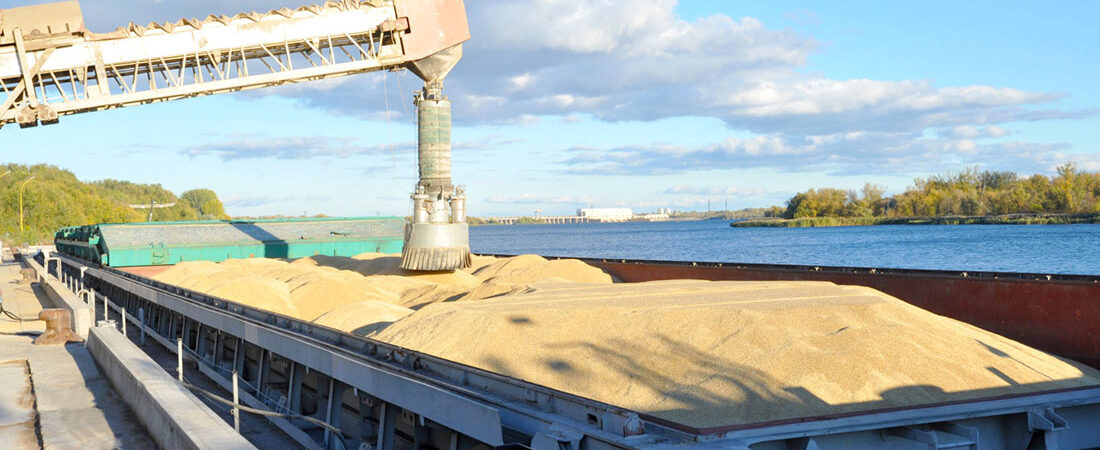Romanian ports, key to releasing tons of grain trapped in Ukraine

Romania is working around the clock to speed up the export of millions of tons of grain trapped in war-ravaged Ukraine through its ports on the Danube River and the Black Sea.
Since the beginning of the Russian invasion of Ukraine in February, over 1 million tons of Ukrainian grain have arrived at the Romanian Black Sea port of Constanta.
While some 710,000 tons have been shipped to their final destination, the rest has been stored in silos at the port.
Although the volume of grain passing through Constanta has increased by 9% compared to last year, the port has only managed to release 5% of the over 20 million tons of grain stuck in Ukrainian ports, blocked by Russian invaders.
The main obstacle to exporting grain from Constanta, located less than 500 kilometers from the Ukrainian port of Odesa, is road and rail links between the two countries.
Since the war in Ukraine, long queues of trucks transporting grain have formed at the Romanian, Moldovan and Ukrainian borders.
While transportation by train would be much more efficient than trucks, the difference in track gauges between Ukraine and Romania has complicated rail transport.
“Trade with Ukraine has not been significant so far, which has led to the degradation of existing routes,” director of the port operating company in Constanta, Viorel Panait, tells Efe.
“Repairs cannot be done in one day,” he adds.
Large parts of the train tracks connecting the countries have been blocked by unusable or broken train wagons, which the Romanian government has started to repair in a bid to increase the port’s reception capacity.
The Romanian government is also reconstructing part of the railway that passes through Moldova, connecting Ukraine with the Romanian port of Galati on the Danube River.
Another efficient mode of transport are barges, which travel along the Danube River from Odesa to Constanta.
Comvex has invested 4 million euros ($3.9 million dollars) in the construction of a new system to deposit grain brought in by barges directly in the port’s silos.
“From a maximum daily unloading of 14,000 tons a day, we have increased to 28,000 tons a day,” Panait says.
According to the director of Comvex, the key to exporting higher quantities of grain is speed.
“If trucks and barges have to wait, the time lost is also a loss in the annual quantity exported,” Panait said.
“No port in Europe is ready to receive the additional quantities coming from Ukraine,” he added, admitting that while there is room for improvement, the Constanta port has played an important role in unblocking Ukrainian grain exports.
Read also
Wheat in Southern Brazil Impacted by Dry Weather and Frosts
Oilseed Industry. Leaders and Strategies in the Times of a Great Change
Black Sea & Danube Region: Oilseed and Vegoil Markets Within Ongoing Transfor...
Serbia. The drought will cause extremely high losses for farmers this year
2023/24 Safrinha Corn in Brazil 91% Harvested
Write to us
Our manager will contact you soon



